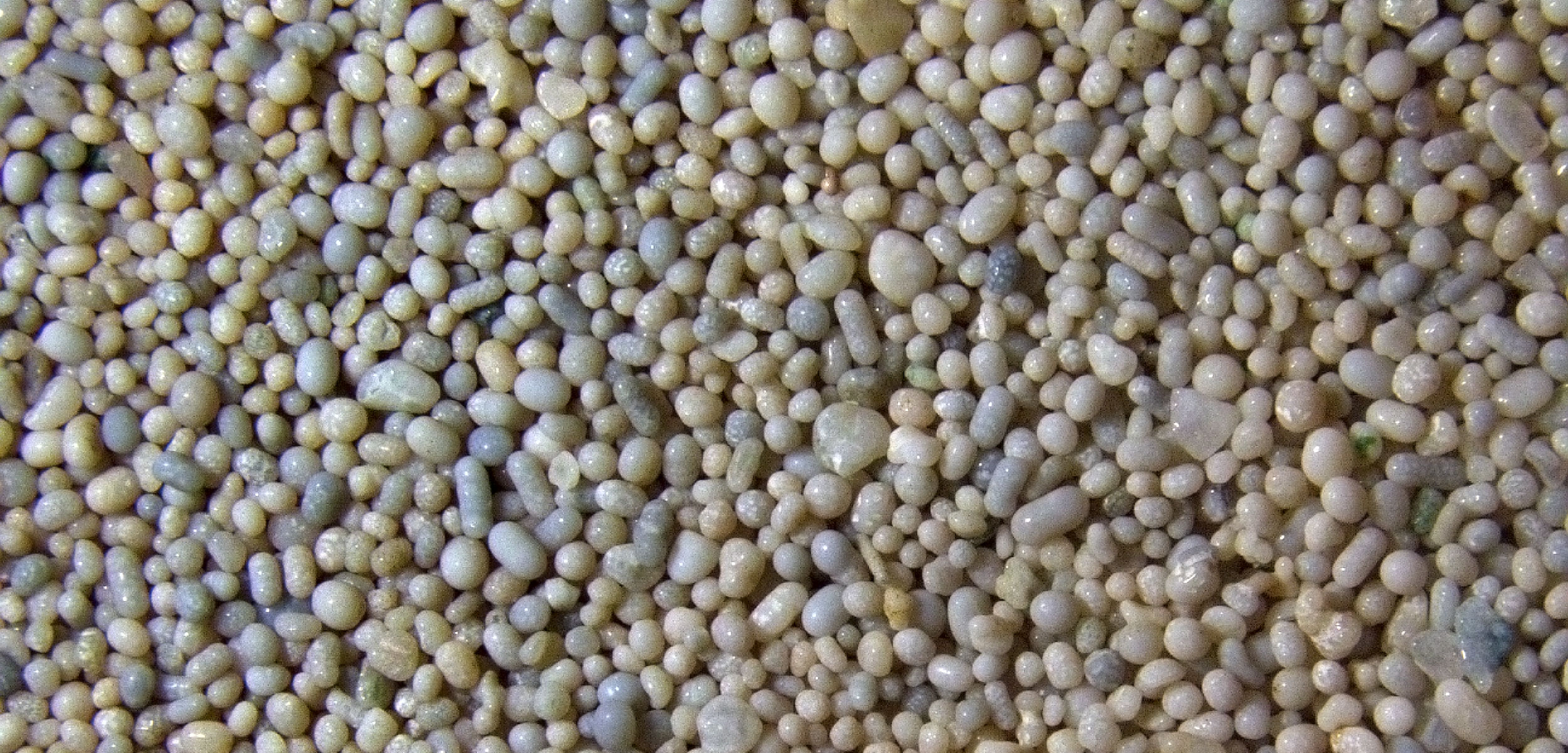The Mysterious Origin of Oolitic Sand
New evidence is emerging for the odd hypothesis that this strange, egg-shaped sand is built by microbes.
Article body copy
Becoming a grain of sand is a long, erosive process. For instance, a massive boulder is weathered by the elements and breaks down into millions of tiny flecks, or a reef is chipped away and extruded by the hard-toothed, coral-chomping parrotfish. But one peculiar type of sand bucks this trend: instead of eroding, it grows. On the shores of the Bahamas, Great Salt Lake in Utah, and a handful of other locations, oolitic sand is built up, layer by layer, by a process that remains somewhat mysterious.
Oolitic sand begins as a speck—maybe shrimp feces or a tiny shell fragment—suspended in shallow, roiling water. This initial nugget forms the core onto which dissolved minerals are laid down, eventually growing into tiny granules known as ooids. While some scientists suspect that ooid growth is driven by the chemical process of minerals precipitating out of the water, new research led by geologist Bob Burne of Australian National University adds evidence to a competing hypothesis that microbes are at the root of the process.
“We have proposed a radically different explanation for the origin of ooids that explains their definitive features,” says Burne.
Ooids are eggshell white and spherical. The word ooid is derived from the Greek word for egg, and up close the oolitic sand looks like an endless sea of tiny eggs. Beneath the polished surface of each ooid are concentric layers of calcium carbonate that look strikingly similar to tree rings when viewed under a microscope.
According to Burne’s new research, these nested mineral layers are deposited one by one by microbe communities that cling together and grow in a slimy film around the core. These microbe biofilms excrete minerals, and as each new layer envelops the growing core, the old one dies off, leaving a calcified layer behind. Slowly, this process creates a grain of sand. Multiplied over millions of years, enough oolitic sand can accumulate to cover expansive beaches such as those found in the Bahamas.
University of Wisconsin Oshkosh geologist Eric Hiatt, who was not involved in the study, says it’s becoming increasingly clear that bacteria and biofilms play an important role in the formation of ooids. However, Hiatt says he’s not yet convinced that microbes are always directly responsible for creating ooids. “What we do know for certain is that microbes change the water chemistry,” he says. “They take up and sometimes release carbon dioxide,” he adds, noting that this is important for calcium carbonate mineralization. So, if microbes are not directly responsible for ooid growth through layers of biofilms, then they are at least affecting the water chemistry, making it easier for minerals to deposit around a growing grain of sand.
Although the precise role microbes play in forming this unique variety of sand has yet to be nailed down, each ooid is a reminder of the mysterious, tiny world at work just beneath your feet.

